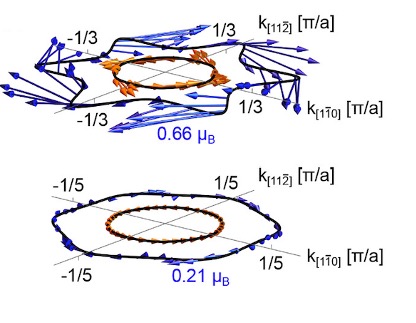Enhanced Critical Field at an Oxide Interface in Nano Letters
Almost uncharged and non-magnetic electrons explain resilience to magnetic fields in exotic superconductors
ISC Director, J. Lorenzana, coauthored an interesting work on Nano Letters, Enhanced Critical Field of Superconductivity at an Oxide Interface, Athby H. Al-Tawhid
A. H. Al-Tawhid, S. J. Poage, S. Salmani-Rezaie, A. Gonzalez, S. Chikara, D. A. Muller, D. P. Kumah, Maria N. Gastiasoro, J. Lorenzana, and K. Ahadi, Nano Lett. 2023, 23, 6944 (2023).
SrTiO3 and KTaO3 are insulators which, judging from it fast-growing dielectric susceptibility, seem to approach a ferroelectric instability when lowering the temperature. This tendency, however, is never realized as at low temperatures the classical Curie-like physics breaks down, and the materials reach a quantum disordered state. As if this were not astonishing enough, when a few electrons are added to the insulators they become among the lowest density superconductors known to man.
In free space, electrons carry a charge and a magnetic moment of one Bohr magnetron. Electrons in the above incipient ferroelectrics, are instead quite exotic as the divergent electron susceptibility screens almost completely the long-range Coulomb interaction, forming quasiparticles known as “polarons”. Thus, the electrons are almost “non-electrical”. In a recent paper with experimental colleagues, Gastiasoro and Lorenzana argue that they are also almost “non-magnetic”. They arrived to this surprising conclusion analyzing experimental data by Kaveh Ahadi and collaborators.
Fermi surfaces of a model of KTaO3 showing large portions with very small magnetic moments of quasiparticles at high (upper panel) and low density (lower panel).
To superconduct, electrons form so-called “Cooper pairs” with magnetic moments antialigned. A strong-magnetic field can break the Cooper pairs and destroy the superconductivity at a critical magnetic field called the “Pauli limit”. Ahadi and collaborators showed that the critical magnetic field can be puzzling large, reaching eight times the Pauli limit. Analyzing the role of spin-orbit coupling, Gastiasoro and Lorenzana showed that one can not neglect the fact that electrons are orbiting around ions and have also an orbital magnetic moment besides an intrinsic spin magnetic moment. Both moments tend to cancel each other, so the resulting quasiparticle has almost no magnetic moment and therefore electrons and Cooper pairs are immune to the magnetic field. Thus, these exotic superconductors formed by almost non-magnetic and non-electric electrons result very resilient to external magnetic fields. This resilience may turn very useful as applications often require large magnetic fields coexisting with superconductivity.


